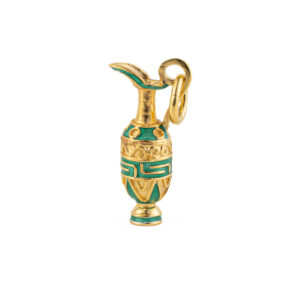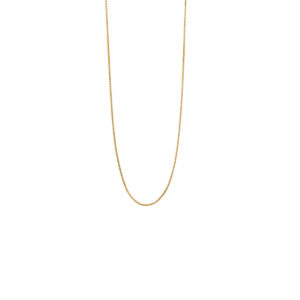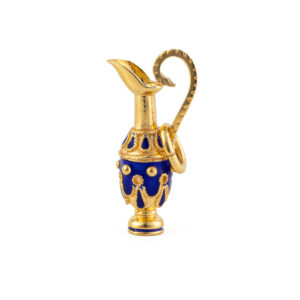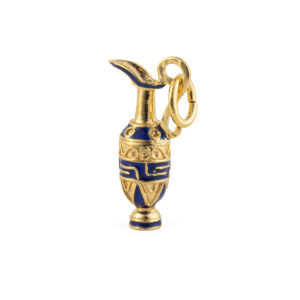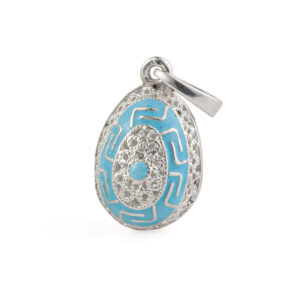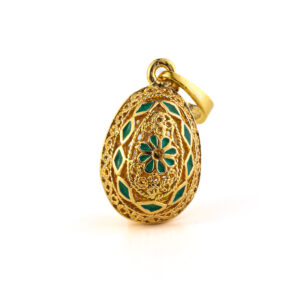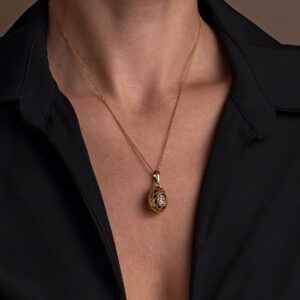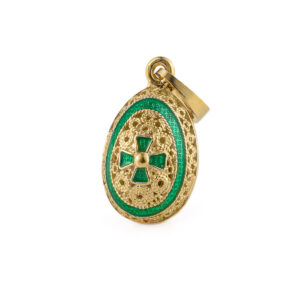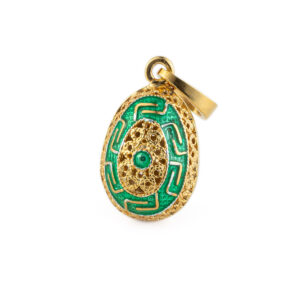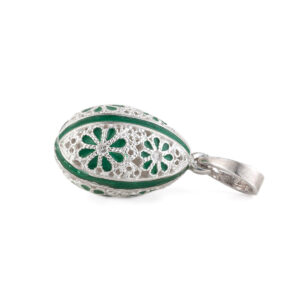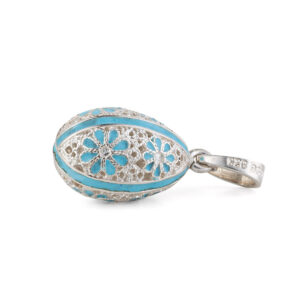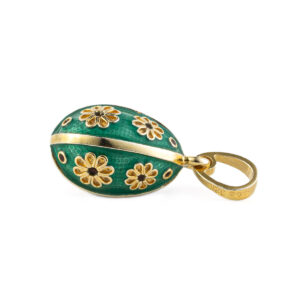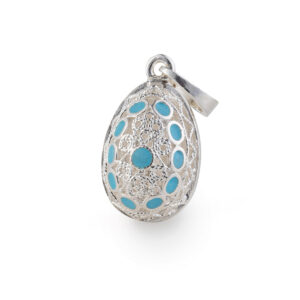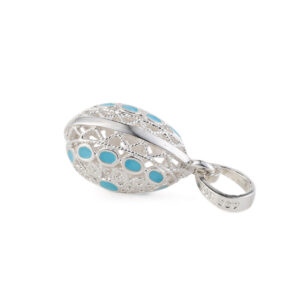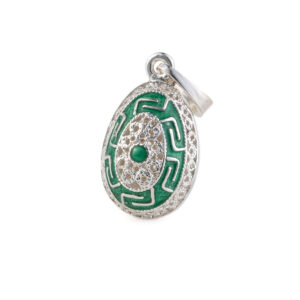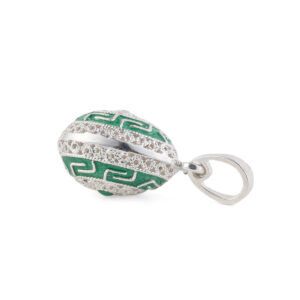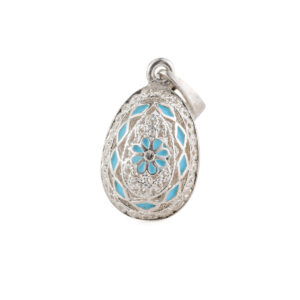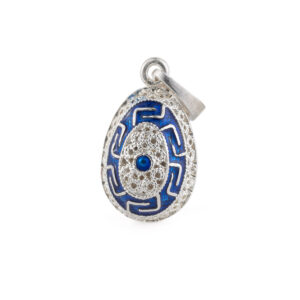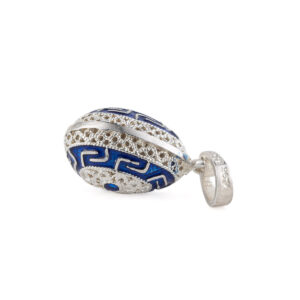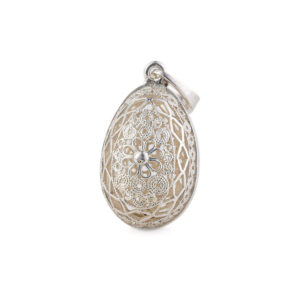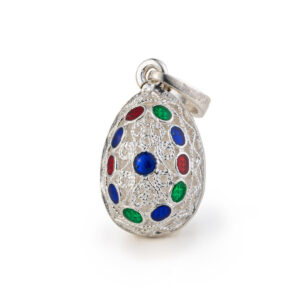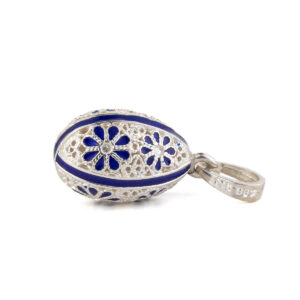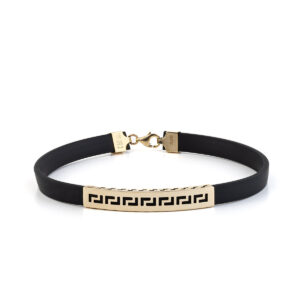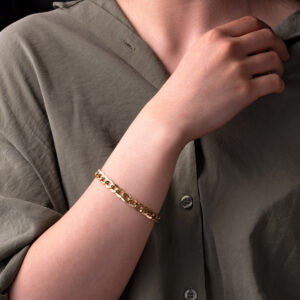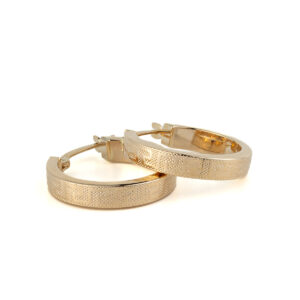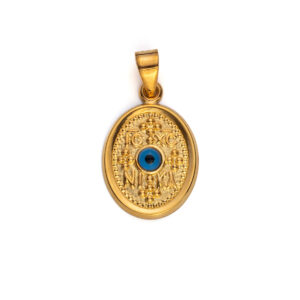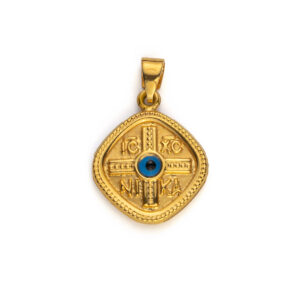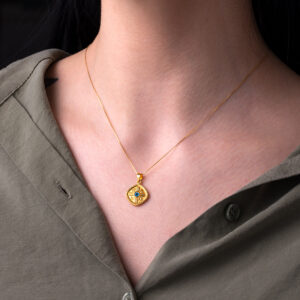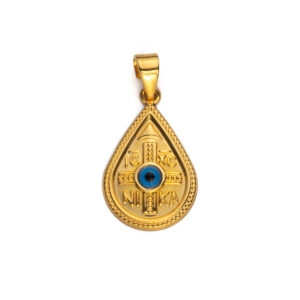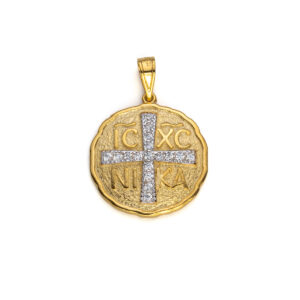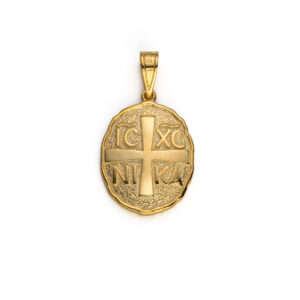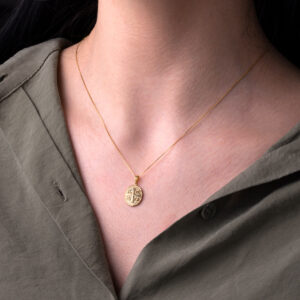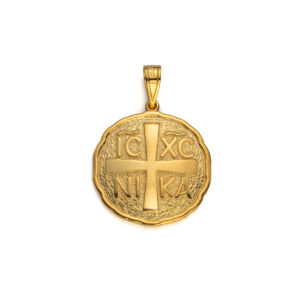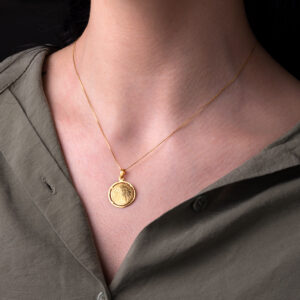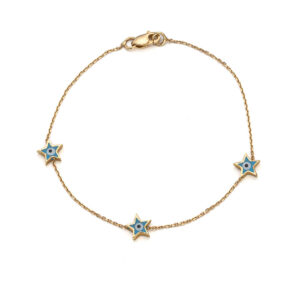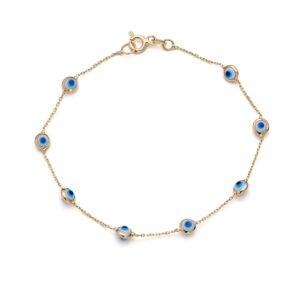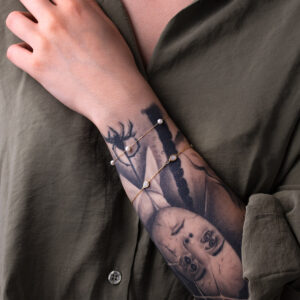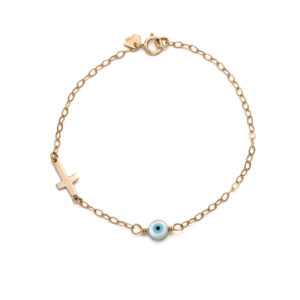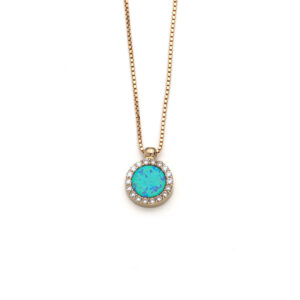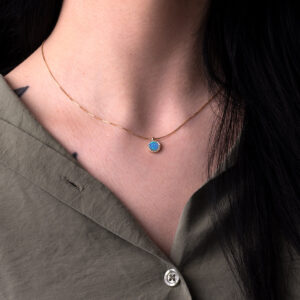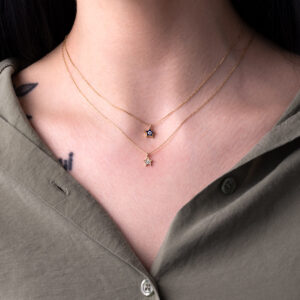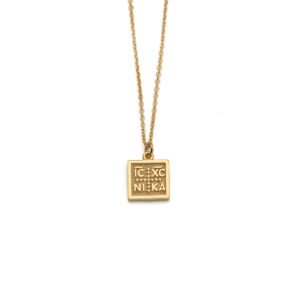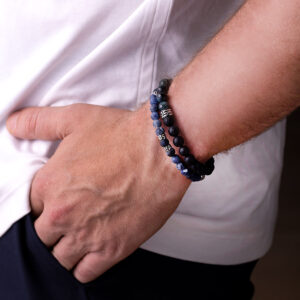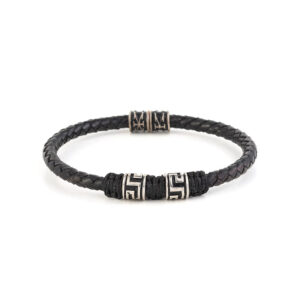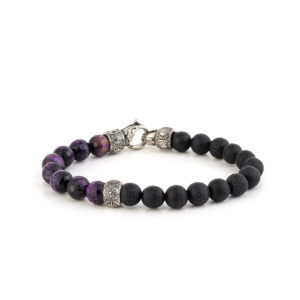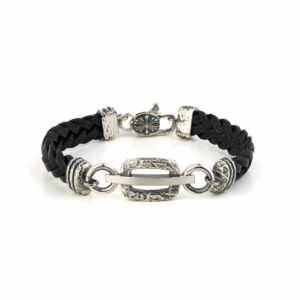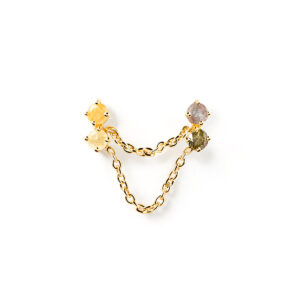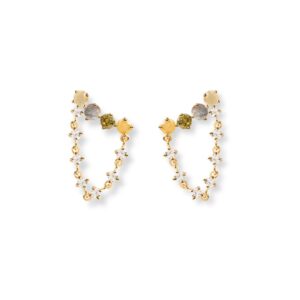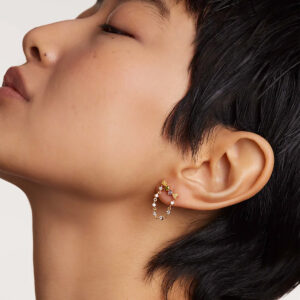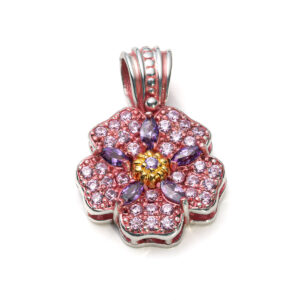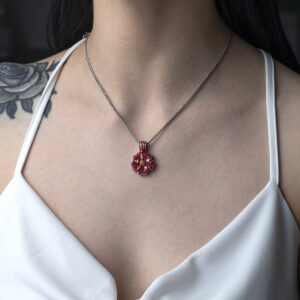Κολιέ με Μενταγιόν Αμφορέας – Ασήμι 925 Επιχρυσωμένο
Ancient Greek Amphora Pendant with enamel.
Design inspired by the ancient Greek history.
Made of sterling silver and gold plated.
Handmade item
Amphora is a Greco – Roman word developed in ancient Greek during the Bronze Age. An amphora is a type of container of a characteristic shape and size. Amphorae were used for the transport and storage of various products, both liquid and dry, but mostly for wine. They are most often ceramic. the amphorae used in Ancient Greek vase painting. (source wikipedia)
Κολιέ με Μενταγιόν Αμφορέας – Ασήμι 925 Επιχρυσωμένο
Ancient Greek Amphora Pendant with enamel.
Design inspired by the ancient Greek history.
Made of sterling silver and gold plated.
Handmade item
Amphora is a Greco – Roman word developed in ancient Greek during the Bronze Age. An amphora is a type of container of a characteristic shape and size. Amphorae were used for the transport and storage of various products, both liquid and dry, but mostly for wine. They are most often ceramic. the amphorae used in Ancient Greek vase painting. (source wikipedia)
Κολιέ με Μενταγιόν Αμφορέας – Ασήμι 925 Επιχρυσωμένο
Ancient Greek Amphora Pendant with enamel and Meander design.
Design inspired by the ancient Greek history.
Made of sterling silver and gold plated.
Handmade item
Amphora is a Greco – Roman word developed in ancient Greek during the Bronze Age. An amphora is a type of container of a characteristic shape and size. Amphorae were used for the transport and storage of various products, both liquid and dry, but mostly for wine. They are most often ceramic. the amphorae used in Ancient Greek vase painting. (source wikipedia)
Meander or Meandros design, one of the most historic symbols of the Greek World, also called Greek Key and symbolizes long life and eternity. The pattern with Meander was used in antiquity to decorate the frieze of temples.
Κολιέ με Μενταγιόν Αυγό – Ασήμι 925
The pendant is embellished with a fine filigree and enamel in Faberge style.
Made of 925 sterling silver.
Handmade in Greece.
The chain shown is included.
Filigree is a delicate kind of jewellery metalwork, made with tiny beads or twisted threads, or both in combination, soldered together or to the surface of an object of the same metal and arranged in artistic motifs. The art of filigree dates back to ancient history. The first of the found jewelry in this technique have been found in Mesopotamia and dates to thousands of years BC. In the ancient world and particularly in Asia Minor, this art grew were at the highest level.
Fabergé egg is a jeweled egg created by the House of Fabergé, in St. Petersburg, Imperial Russia. Virtually all were manufactured under the supervision of Peter Carl Fabergé between 1885 and 1917,[citation needed] the most famous being the 50 “Imperial” eggs, 43 of which survive, made for the Russian Tsars Alexander III and Nicholas II as Easter gifts for their wives and mothers. The first Fabergé egg was crafted for Tsar Alexander III, who had decided to give his wife, the Empress Maria Feodorovna, an Easter egg in 1885. Peter Carl Fabergé was a Russian jeweller best known for the famous Fabergé eggs made in the style of genuine Easter eggs, using precious metals and gemstones. He’s the founder of the famous jewelry legacy House of Fabergé.
Κολιέ με Μενταγιόν Αυγό – Ασήμι 925 Επιχρυσωμένο
The pendant is embellished with a fine filigree and enamel in Faberge style.
Made of 925 sterling silver and gold plated.
Handmade in Greece.
The chain shown is included.
Filigree is a delicate kind of jewellery metalwork, made with tiny beads or twisted threads, or both in combination, soldered together or to the surface of an object of the same metal and arranged in artistic motifs. The art of filigree dates back to ancient history. The first of the found jewelry in this technique have been found in Mesopotamia and dates to thousands of years BC. In the ancient world and particularly in Asia Minor, this art grew were at the highest level.
Fabergé egg is a jeweled egg created by the House of Fabergé, in St. Petersburg, Imperial Russia. Virtually all were manufactured under the supervision of Peter Carl Fabergé between 1885 and 1917,[citation needed] the most famous being the 50 “Imperial” eggs, 43 of which survive, made for the Russian Tsars Alexander III and Nicholas II as Easter gifts for their wives and mothers. The first Fabergé egg was crafted for Tsar Alexander III, who had decided to give his wife, the Empress Maria Feodorovna, an Easter egg in 1885. Peter Carl Fabergé was a Russian jeweller best known for the famous Fabergé eggs made in the style of genuine Easter eggs, using precious metals and gemstones. He’s the founder of the famous jewelry legacy House of Fabergé.
Κολιέ με Μενταγιόν Αυγό – Ασήμι 925 Επιχρυσωμένο
The pendant is embellished with a fine filigree and enamel in Faberge style.
Made of 925 sterling silver and gold plated.
Handmade in Greece.
The chain shown is included.
Filigree is a delicate kind of jewellery metalwork, made with tiny beads or twisted threads, or both in combination, soldered together or to the surface of an object of the same metal and arranged in artistic motifs. The art of filigree dates back to ancient history. The first of the found jewelry in this technique have been found in Mesopotamia and dates to thousands of years BC. In the ancient world and particularly in Asia Minor, this art grew were at the highest level.
Fabergé egg is a jeweled egg created by the House of Fabergé, in St. Petersburg, Imperial Russia. Virtually all were manufactured under the supervision of Peter Carl Fabergé between 1885 and 1917,[citation needed] the most famous being the 50 “Imperial” eggs, 43 of which survive, made for the Russian Tsars Alexander III and Nicholas II as Easter gifts for their wives and mothers. The first Fabergé egg was crafted for Tsar Alexander III, who had decided to give his wife, the Empress Maria Feodorovna, an Easter egg in 1885. Peter Carl Fabergé was a Russian jeweller best known for the famous Fabergé eggs made in the style of genuine Easter eggs, using precious metals and gemstones. He’s the founder of the famous jewelry legacy House of Fabergé.
Κολιέ με Μενταγιόν Αυγό – Ασήμι 925 Επιχρυσωμένο
The pendant is embellished with a fine filigree and enamel in Faberge style.
Made of 925 sterling silver and gold plated.
Handmade in Greece.
The chain shown is included.
Filigree is a delicate kind of jewellery metalwork, made with tiny beads or twisted threads, or both in combination, soldered together or to the surface of an object of the same metal and arranged in artistic motifs. The art of filigree dates back to ancient history. The first of the found jewelry in this technique have been found in Mesopotamia and dates to thousands of years BC. In the ancient world and particularly in Asia Minor, this art grew were at the highest level.
Fabergé egg is a jeweled egg created by the House of Fabergé, in St. Petersburg, Imperial Russia. Virtually all were manufactured under the supervision of Peter Carl Fabergé between 1885 and 1917,[citation needed] the most famous being the 50 “Imperial” eggs, 43 of which survive, made for the Russian Tsars Alexander III and Nicholas II as Easter gifts for their wives and mothers. The first Fabergé egg was crafted for Tsar Alexander III, who had decided to give his wife, the Empress Maria Feodorovna, an Easter egg in 1885. Peter Carl Fabergé was a Russian jeweller best known for the famous Fabergé eggs made in the style of genuine Easter eggs, using precious metals and gemstones. He’s the founder of the famous jewelry legacy House of Fabergé.
Κολιέ με Μενταγιόν Αυγό – Ασήμι 925
The pendant is embellished with a fine filigree and enamel in Faberge style.
Made of 925 sterling silver.
Handmade in Greece.
The chain shown is included.
Filigree is a delicate kind of jewellery metalwork, made with tiny beads or twisted threads, or both in combination, soldered together or to the surface of an object of the same metal and arranged in artistic motifs. The art of filigree dates back to ancient history. The first of the found jewelry in this technique have been found in Mesopotamia and dates to thousands of years BC. In the ancient world and particularly in Asia Minor, this art grew were at the highest level.
Fabergé egg is a jeweled egg created by the House of Fabergé, in St. Petersburg, Imperial Russia. Virtually all were manufactured under the supervision of Peter Carl Fabergé between 1885 and 1917,[citation needed] the most famous being the 50 “Imperial” eggs, 43 of which survive, made for the Russian Tsars Alexander III and Nicholas II as Easter gifts for their wives and mothers. The first Fabergé egg was crafted for Tsar Alexander III, who had decided to give his wife, the Empress Maria Feodorovna, an Easter egg in 1885. Peter Carl Fabergé was a Russian jeweller best known for the famous Fabergé eggs made in the style of genuine Easter eggs, using precious metals and gemstones. He’s the founder of the famous jewelry legacy House of Fabergé.
Κολιέ με Μενταγιόν Αυγό – Ασήμι 925
The pendant is embellished with a fine filigree and enamel in Faberge style.
Made of 925 sterling silver.
Handmade in Greece.
The chain shown is included.
Filigree is a delicate kind of jewellery metalwork, made with tiny beads or twisted threads, or both in combination, soldered together or to the surface of an object of the same metal and arranged in artistic motifs. The art of filigree dates back to ancient history. The first of the found jewelry in this technique have been found in Mesopotamia and dates to thousands of years BC. In the ancient world and particularly in Asia Minor, this art grew were at the highest level.
Fabergé egg is a jeweled egg created by the House of Fabergé, in St. Petersburg, Imperial Russia. Virtually all were manufactured under the supervision of Peter Carl Fabergé between 1885 and 1917,[citation needed] the most famous being the 50 “Imperial” eggs, 43 of which survive, made for the Russian Tsars Alexander III and Nicholas II as Easter gifts for their wives and mothers. The first Fabergé egg was crafted for Tsar Alexander III, who had decided to give his wife, the Empress Maria Feodorovna, an Easter egg in 1885. Peter Carl Fabergé was a Russian jeweller best known for the famous Fabergé eggs made in the style of genuine Easter eggs, using precious metals and gemstones. He’s the founder of the famous jewelry legacy House of Fabergé.
Κολιέ με Μενταγιόν Αυγό – Ασήμι 925 Επιχρυσωμένο
The pendant is embellished with a fine filigree and enamel in Faberge style.
Made of 925 sterling silver and gold plated.
Handmade in Greece.
The chain shown is included.
Filigree is a delicate kind of jewellery metalwork, made with tiny beads or twisted threads, or both in combination, soldered together or to the surface of an object of the same metal and arranged in artistic motifs. The art of filigree dates back to ancient history. The first of the found jewelry in this technique have been found in Mesopotamia and dates to thousands of years BC. In the ancient world and particularly in Asia Minor, this art grew were at the highest level.
Fabergé egg is a jeweled egg created by the House of Fabergé, in St. Petersburg, Imperial Russia. Virtually all were manufactured under the supervision of Peter Carl Fabergé between 1885 and 1917,[citation needed] the most famous being the 50 “Imperial” eggs, 43 of which survive, made for the Russian Tsars Alexander III and Nicholas II as Easter gifts for their wives and mothers. The first Fabergé egg was crafted for Tsar Alexander III, who had decided to give his wife, the Empress Maria Feodorovna, an Easter egg in 1885. Peter Carl Fabergé was a Russian jeweller best known for the famous Fabergé eggs made in the style of genuine Easter eggs, using precious metals and gemstones. He’s the founder of the famous jewelry legacy House of Fabergé.
Κολιέ με Μενταγιόν Αυγό – Ασήμι 925
The pendant is embellished with a fine filigree and enamel in Faberge style.
Made of 925 sterling silver.
Handmade in Greece.
The chain shown is included.
Filigree is a delicate kind of jewellery metalwork, made with tiny beads or twisted threads, or both in combination, soldered together or to the surface of an object of the same metal and arranged in artistic motifs. The art of filigree dates back to ancient history. The first of the found jewelry in this technique have been found in Mesopotamia and dates to thousands of years BC. In the ancient world and particularly in Asia Minor, this art grew were at the highest level.
Fabergé egg is a jeweled egg created by the House of Fabergé, in St. Petersburg, Imperial Russia. Virtually all were manufactured under the supervision of Peter Carl Fabergé between 1885 and 1917,[citation needed] the most famous being the 50 “Imperial” eggs, 43 of which survive, made for the Russian Tsars Alexander III and Nicholas II as Easter gifts for their wives and mothers. The first Fabergé egg was crafted for Tsar Alexander III, who had decided to give his wife, the Empress Maria Feodorovna, an Easter egg in 1885. Peter Carl Fabergé was a Russian jeweller best known for the famous Fabergé eggs made in the style of genuine Easter eggs, using precious metals and gemstones. He’s the founder of the famous jewelry legacy House of Fabergé.
Κολιέ με Μενταγιόν Αυγό – Ασήμι 925
The pendant is embellished with a fine filigree and enamel in Faberge style.
Made of 925 sterling silver.
Handmade in Greece.
The chain shown is included.
Filigree is a delicate kind of jewellery metalwork, made with tiny beads or twisted threads, or both in combination, soldered together or to the surface of an object of the same metal and arranged in artistic motifs. The art of filigree dates back to ancient history. The first of the found jewelry in this technique have been found in Mesopotamia and dates to thousands of years BC. In the ancient world and particularly in Asia Minor, this art grew were at the highest level.
Fabergé egg is a jeweled egg created by the House of Fabergé, in St. Petersburg, Imperial Russia. Virtually all were manufactured under the supervision of Peter Carl Fabergé between 1885 and 1917,[citation needed] the most famous being the 50 “Imperial” eggs, 43 of which survive, made for the Russian Tsars Alexander III and Nicholas II as Easter gifts for their wives and mothers. The first Fabergé egg was crafted for Tsar Alexander III, who had decided to give his wife, the Empress Maria Feodorovna, an Easter egg in 1885. Peter Carl Fabergé was a Russian jeweller best known for the famous Fabergé eggs made in the style of genuine Easter eggs, using precious metals and gemstones. He’s the founder of the famous jewelry legacy House of Fabergé.
Κολιέ με Μενταγιόν Αυγό – Ασήμι 925
The pendant is embellished with a fine filigree and enamel in Faberge style.
Made of 925 sterling silver.
Handmade in Greece.
The chain shown is included.
Filigree is a delicate kind of jewellery metalwork, made with tiny beads or twisted threads, or both in combination, soldered together or to the surface of an object of the same metal and arranged in artistic motifs. The art of filigree dates back to ancient history. The first of the found jewelry in this technique have been found in Mesopotamia and dates to thousands of years BC. In the ancient world and particularly in Asia Minor, this art grew were at the highest level.
Fabergé egg is a jeweled egg created by the House of Fabergé, in St. Petersburg, Imperial Russia. Virtually all were manufactured under the supervision of Peter Carl Fabergé between 1885 and 1917,[citation needed] the most famous being the 50 “Imperial” eggs, 43 of which survive, made for the Russian Tsars Alexander III and Nicholas II as Easter gifts for their wives and mothers. The first Fabergé egg was crafted for Tsar Alexander III, who had decided to give his wife, the Empress Maria Feodorovna, an Easter egg in 1885. Peter Carl Fabergé was a Russian jeweller best known for the famous Fabergé eggs made in the style of genuine Easter eggs, using precious metals and gemstones. He’s the founder of the famous jewelry legacy House of Fabergé.
Κολιέ με Μενταγιόν Αυγό – Ασήμι 925
The pendant is embellished with a fine filigree and enamel in Faberge style.
Made of 925 sterling silver.
Handmade in Greece.
The chain shown is included.
Filigree is a delicate kind of jewellery metalwork, made with tiny beads or twisted threads, or both in combination, soldered together or to the surface of an object of the same metal and arranged in artistic motifs. The art of filigree dates back to ancient history. The first of the found jewelry in this technique have been found in Mesopotamia and dates to thousands of years BC. In the ancient world and particularly in Asia Minor, this art grew were at the highest level.
Fabergé egg is a jeweled egg created by the House of Fabergé, in St. Petersburg, Imperial Russia. Virtually all were manufactured under the supervision of Peter Carl Fabergé between 1885 and 1917,[citation needed] the most famous being the 50 “Imperial” eggs, 43 of which survive, made for the Russian Tsars Alexander III and Nicholas II as Easter gifts for their wives and mothers. The first Fabergé egg was crafted for Tsar Alexander III, who had decided to give his wife, the Empress Maria Feodorovna, an Easter egg in 1885. Peter Carl Fabergé was a Russian jeweller best known for the famous Fabergé eggs made in the style of genuine Easter eggs, using precious metals and gemstones. He’s the founder of the famous jewelry legacy House of Fabergé.
Κολιέ με Μενταγιόν Αυγό – Ασήμι 925
The pendant is embellished with a fine filigree and enamel in Faberge style.
Made of 925 sterling silver.
Handmade in Greece.
The chain shown is included.
Filigree is a delicate kind of jewellery metalwork, made with tiny beads or twisted threads, or both in combination, soldered together or to the surface of an object of the same metal and arranged in artistic motifs. The art of filigree dates back to ancient history. The first of the found jewelry in this technique have been found in Mesopotamia and dates to thousands of years BC. In the ancient world and particularly in Asia Minor, this art grew were at the highest level.
Fabergé egg is a jeweled egg created by the House of Fabergé, in St. Petersburg, Imperial Russia. Virtually all were manufactured under the supervision of Peter Carl Fabergé between 1885 and 1917,[citation needed] the most famous being the 50 “Imperial” eggs, 43 of which survive, made for the Russian Tsars Alexander III and Nicholas II as Easter gifts for their wives and mothers. The first Fabergé egg was crafted for Tsar Alexander III, who had decided to give his wife, the Empress Maria Feodorovna, an Easter egg in 1885. Peter Carl Fabergé was a Russian jeweller best known for the famous Fabergé eggs made in the style of genuine Easter eggs, using precious metals and gemstones. He’s the founder of the famous jewelry legacy House of Fabergé.
Κολιέ με Μενταγιόν Αυγό – Ασήμι 925
The pendant is embellished with a fine filigree and enamel in Faberge style.
Made of 925 sterling silver.
Handmade in Greece.
The chain shown is included.
Filigree is a delicate kind of jewellery metalwork, made with tiny beads or twisted threads, or both in combination, soldered together or to the surface of an object of the same metal and arranged in artistic motifs. The art of filigree dates back to ancient history. The first of the found jewelry in this technique have been found in Mesopotamia and dates to thousands of years BC. In the ancient world and particularly in Asia Minor, this art grew were at the highest level.
Fabergé egg is a jeweled egg created by the House of Fabergé, in St. Petersburg, Imperial Russia. Virtually all were manufactured under the supervision of Peter Carl Fabergé between 1885 and 1917,[citation needed] the most famous being the 50 “Imperial” eggs, 43 of which survive, made for the Russian Tsars Alexander III and Nicholas II as Easter gifts for their wives and mothers. The first Fabergé egg was crafted for Tsar Alexander III, who had decided to give his wife, the Empress Maria Feodorovna, an Easter egg in 1885. Peter Carl Fabergé was a Russian jeweller best known for the famous Fabergé eggs made in the style of genuine Easter eggs, using precious metals and gemstones. He’s the founder of the famous jewelry legacy House of Fabergé.
Κολιέ με Μενταγιόν Αυγό – Ασήμι 925
The pendant is embellished with a fine filigree and multicolor enamel in Faberge style.
Made of 925 sterling silver.
Handmade in Greece.
The chain shown is included.
Filigree is a delicate kind of jewellery metalwork, made with tiny beads or twisted threads, or both in combination, soldered together or to the surface of an object of the same metal and arranged in artistic motifs. The art of filigree dates back to ancient history. The first of the found jewelry in this technique have been found in Mesopotamia and dates to thousands of years BC. In the ancient world and particularly in Asia Minor, this art grew were at the highest level.
Fabergé egg is a jeweled egg created by the House of Fabergé, in St. Petersburg, Imperial Russia. Virtually all were manufactured under the supervision of Peter Carl Fabergé between 1885 and 1917,[citation needed] the most famous being the 50 “Imperial” eggs, 43 of which survive, made for the Russian Tsars Alexander III and Nicholas II as Easter gifts for their wives and mothers. The first Fabergé egg was crafted for Tsar Alexander III, who had decided to give his wife, the Empress Maria Feodorovna, an Easter egg in 1885. Peter Carl Fabergé was a Russian jeweller best known for the famous Fabergé eggs made in the style of genuine Easter eggs, using precious metals and gemstones. He’s the founder of the famous jewelry legacy House of Fabergé.
Κολιέ με Μενταγιόν Αυγό – Ασήμι 925
The pendant is embellished with a fine filigree and blue enamel in Faberge style.
Made of 925 sterling silver.
Handmade in Greece.
The chain shown is included.
Filigree is a delicate kind of jewellery metalwork, made with tiny beads or twisted threads, or both in combination, soldered together or to the surface of an object of the same metal and arranged in artistic motifs. The art of filigree dates back to ancient history. The first of the found jewelry in this technique have been found in Mesopotamia and dates to thousands of years BC. In the ancient world and particularly in Asia Minor, this art grew were at the highest level.
Fabergé egg is a jeweled egg created by the House of Fabergé, in St. Petersburg, Imperial Russia. Virtually all were manufactured under the supervision of Peter Carl Fabergé between 1885 and 1917,[citation needed] the most famous being the 50 “Imperial” eggs, 43 of which survive, made for the Russian Tsars Alexander III and Nicholas II as Easter gifts for their wives and mothers. The first Fabergé egg was crafted for Tsar Alexander III, who had decided to give his wife, the Empress Maria Feodorovna, an Easter egg in 1885. Peter Carl Fabergé was a Russian jeweller best known for the famous Fabergé eggs made in the style of genuine Easter eggs, using precious metals and gemstones. He’s the founder of the famous jewelry legacy House of Fabergé.
Βραχιόλι με Μαίανδρο – 14Κ Χρυσό
472,00€Σκουλαρίκια Κρίκοι με Μαίανδρο – Χρυσό 14Κ
278,00€ – 428,00€Φτιαγμένο από χρυσό 14Κ.
Χειροποίητο κόσμημα.
Κωνσταντινάτο Μενταγιόν Οβάλ με Μάτι – 9Κ Χρυσό
135,00€Κατασκευασμένο από Χρυσό 9Κ.
Χειροποίητο Ελληνικό Κόσμημα.
Κωνσταντινάτο Μενταγιόν Ρόμβος – 9Κ Χρυσό
198,00€Κατασκευασμένο από Χρυσό 9Κ.
Χειροποίητο Ελληνικό Κόσμημα.
Κωνσταντινάτο Μενταγιόν Σταγόνα – 9Κ Χρυσό
162,00€Κατασκευασμένο από Χρυσό 9Κ.
Χειροποίητο Ελληνικό Κόσμημα.
Μενταγιόν Κωνσταντινάτο με Σταυρό – 9Κ Χρυσό
267,00€ – 357,00€Κατασκευασμένο από Χρυσό 9Κ.
Χειροποίητο Ελληνικό Κόσμημα.
Κωνσταντινάτο Μενταγιόν Οβάλ – 9Κ Χρυσό
215,00€Κατασκευασμένο από Χρυσό 9Κ.
Χειροποίητο Ελληνικό Κόσμημα.
Κωνσταντινάτο Μενταγιόν – 9Κ Χρυσό
232,00€ – 357,00€A handmade gold pendant that depicts Saints Constantine and Helena on the one side and Christogram with the initials IC XC NIKA (Jesus Christ conquers) on the other side.
Is a unique pendant which you can offer to your special ones as a protection gift or buy it for yourself.
Made of 9k gold.
Handmade in Greece
Κωνσταντινάτο Μενταγιόν Στρογγυλό – 9Κ Χρυσό
195,00€Κατασκευασμένο από Χρυσό 9Κ.
Χειροποίητο Ελληνικό Κόσμημα.
Βραχιόλι Μάτι με Αστέρια – 14Κ Χρυσό
365,00€Made of 14K yellow gold
Handmade in Greece
The symbol and superstition of the evil eye is one of the strongest symbolic images in the world. The earliest known evidence for belief in the evil eye goes back to ancient Greece and Rome. It is supposed to wear off evil to anyone who wears it.
Βραχιόλι με Sodalite Πέτρες – Ασήμι 925
Κατασκευασμένο από ασήμι 925 και ημιπολύτιμες πέτρες.
Χειροποίητο ελληνικό κόσμημα.
Βραχιόλι με Eagle Eye Πέτρες – Ασήμι 925
Κατασκευασμένο από ασήμι 925 και ημιπολύτιμες πέτρες.
Χειροποίητο ελληνικό κόσμημα.
Βραχιόλι με Cat’s Eye Πέτρες – Ασήμι 925
Κατασκευασμένο από ασήμι 925 και ημιπολύτιμες πέτρες.
Χειροποίητο ελληνικό κόσμημα.
Δερμάτινο Βραχιόλι με Μαίανδρο – Ασήμι 925
Κατασκευασμένο από ασήμι 925 και λουράκι από δέρμα.
Το βραχιόλι μπορεί να κατασκευαστεί σε οποιοδήποτε επιθυμητό μήκος (μικρότερο ή μεγαλύτερο). Παρακαλώ εισάγετε το μήκος που θέλετε στη σημείωση του αγοραστή.
Χειροποίητο Ελληνικό Κόσμημα.
Βραχιόλι με Onyx Πέτρες – Ασήμι 925
Κατασκευασμένο από ασήμι 925 και ημιπολύτιμες πέτρες.
Χειροποίητο ελληνικό κόσμημα.
Βραχιόλι με Ocean Jasper Πέτρες – Ασήμι 925
Κατασκευασμένο από ασήμι 925 και ημιπολύτιμες πέτρες.
Χειροποίητο ελληνικό κόσμημα.
Δερμάτινο Βραχιόλι – Ασήμι 925
Κατασκευασμένο από ασήμι 925 και λουράκι από δέρμα.
Το βραχιόλι μπορεί να κατασκευαστεί σε οποιοδήποτε επιθυμητό μήκος (μικρότερο ή μεγαλύτερο). Παρακαλώ εισάγετε το μήκος που θέλετε στη σημείωση του αγοραστή.
Χειροποίητο Ελληνικό Κόσμημα.
Σκουλαρίκια PD Paola Naomi – Ασήμι 925 με επιχρύσωμα 18 καρατίων
Σκουλαρίκια PD Paola Naomi – Ασήμι 925 με επιχρύσωμα 18 καρατίων
Σκουλαρίκια PD Paola Juno – Ασήμι 925 με επιχρύσωμα 18 καρατίων
Σκουλαρίκια PD Paola Juno – Ασήμι 925 με επιχρύσωμα 18 καρατίων
Μενταγιόν Λουλούδι με Swarovski
Κατασκευασμένο από επιχρυσωμένο ασήμι 925 και διακοσμημένο με πέτρα μαλαχίτη.
Χειροποίητο ελληνικό κόσμημα.

